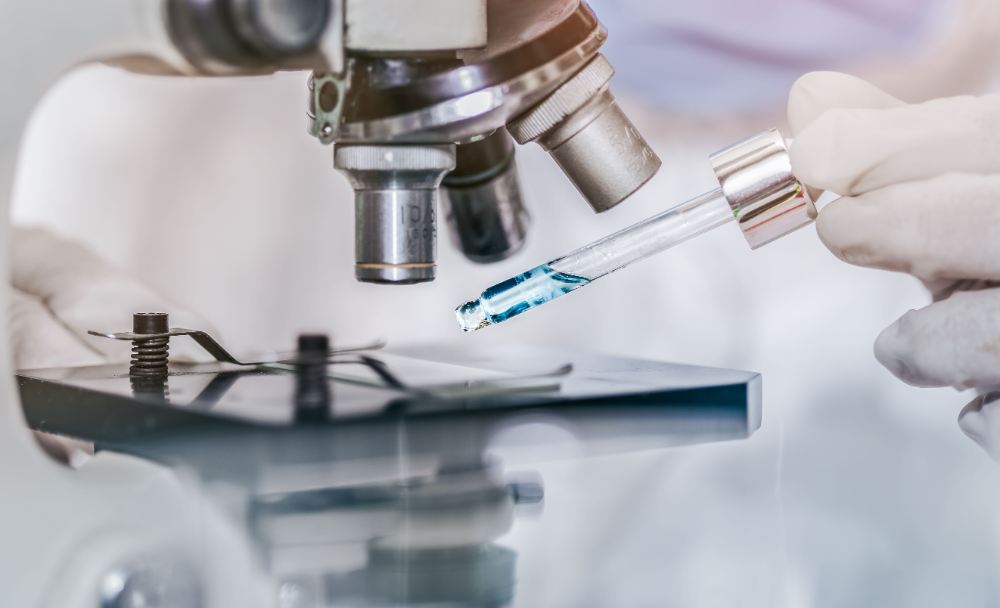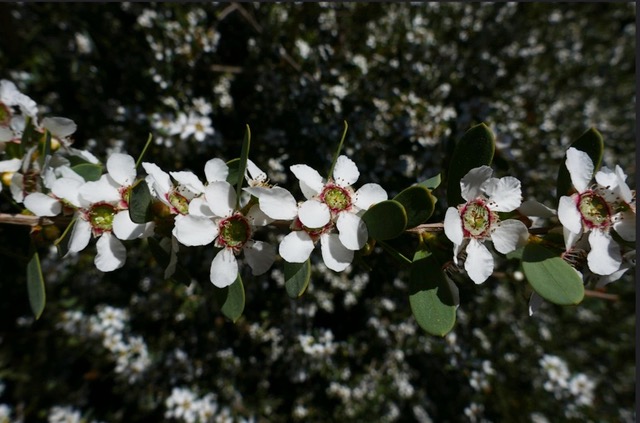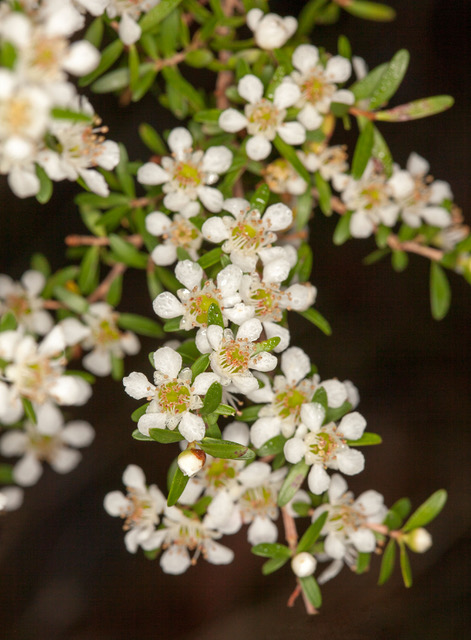Manuka Honey Research
There is a growing body of academic research supporting the therapeutic and medicinal value of Manuka Honey, since the pioneering work by Dr. Peter Molan in New Zealand. This includes:
- work at the University of Dresden (Germany) identifying the significance of MGO,
- research in Japan on the chemical identifiers in Leptospermum honey (such as Leptopserin and Methyl Syringate),
- work in the University of Technology, Sydney on the dietary benefits of Australian honey,
- the University of Sunshine Coast quantitatively measuring the active ingredients dihydroxyacetone (DHA) and methylglyoxal (MGO) and their regional dispersion within Australia, and
- the University of Western Australia studying genetic profiling of unique and endemic Australian species.
Some examples of relevant research papers follow.

Therapeutic Manuka Honey: No Longer So Alternative
Dee A. Carter1*, Shona E. Blair2, Nural N.Cokcetin2, Daniel Bouzo2, Peter Brooks3, Ralf Schothauer4 and Elizabeth J. Harry2
1 School of Life and Environmental Sciences, University of Sydney, Sydney, NSW, Australia, 2 The ithree institute, University of Technology Sydney, Sydney, NSW, Australia, 3 University of the Sunshine Coast, Maroochydore, QLD, Australia, 4 Comvita NZ Limited, Te Puke, New Zealand
PMID: 27148246 PMCID: PMC4837971 DOI: 10.3389/fmicb.2016.00569 Published 2016
Mini literature review including regarding the active ingredients in Manuka honey, and the state of research into its various therapeutic impacts – for example on the treatment of varicella-zoster virus (chickenpox/shingles), influenza, dermatological fungi, and interaction with antibiotics.
There are numerous other studies and reviews regarding the therapeutic benefits of Manuka Honey. For example:
- Regarding wound healing, epithelial regeneration, and ulcer treatments: (Niaz, K, Maqbool, F, Bhadar, H & Abdollahi, M, 2017)
- Regarding wound treatment, and antiproliferative effects against cancer cells: (Alvarez-Suarez, J., Gasparrini, M, Forbes-Hernandez, T, Mazzoni, L & Giampieri, F, 2014)
- Regarding in vitro bactericidal activity against antibiotic-resistant bacteria causing several life-threatening infections in humans : (Mandal, M and Mandal S, 2011)
- Regarding the anti-bacterial action of Manuka Honey, including the interaction of the major active ingredient Methylglyoxal, with other aspects of the Manuka Honey : (Bouzo, D, Cokcetin, N, Li, L, Ballerin, G, Bottomley, A, Lazenby, J, Whitchurch, C, Paulsen, I, Hassan, K & Harry, E, 2020)
- Regarding honey as a possible treatment for Helicobacter pylori infection in the stomach. (Ayala, G, Escobedo-Hinojosa, W & de la Cruz-Herrea, C, 2014)
- Regarding the therapeutic value of Manuka Honey in the treatment of Demodex mites (affecting the eyes). (Frame, K, Cheung, I, Wang, M, Turnbull, P, Watters, & Craig, J., 2018)
- Regarding the value of utilizing Manuka Honey to tackle the problem of anti-microbial resistance, and the significance of Methylglyoxal as the key active ingredient in Manuka Honey. (Roberts, A, Brown, HL & Jenkins, R, 2015)

Leptospermum laevigatum, Tea tree, Australia Credit: phginlon, flickr
The Antibacterial Activity of Honey Derived from Australian Flora
Irish J, Blair S & Carter DA
School of Molecular Bioscience, University of Sydney
PLoS ONE 6(3): e18229. DOI:10.1371/ journal.pone.0018229 Published 2011
A seminal study of antimicrobial activity in honey from Australian sources, which found very high levels of nonhydrogen peroxide activity in at least three varieties of Leptospermum: L polygalifolium, L liversidgei, and L laevigatum, and in other species, in fact exceeding that reported in honey from other countries. Phenol levels were in the range of 14-19.9%, with levels in excess of 10% considered to provide therapeutic benefits as an antimicrobial.
Interestingly, where for most other honey non-peroxide antibacterial activity decreased over time, for these particular Leptospermum varieties and samples, the activity increased over time.
The authors note that it appears that location and entomological factors appear to affect antibacterial activity in honey, even if derived from similar areas. This underlines the importance of testing samples to ensure the strength of Manuka Honey.
The Antibacterial Activity of Australian Leptospermum Honey Correlates with Methylglyoxal Levels
Nural N. Cokcetin, Matthew Pappalardo, Leona T. Campbell, Peter Brooks, Dee A. Carter, Shona E. Blair, Elizabeth J. Harry
Published: December 28, 2016, https://doi.org/10.1371/journal.pone.0167780
Comparing various samples of Australian Leptospermum with controls (including Leptospermum scoparium from New Zealand) indicating that there was a huge range in anti-bacterial activity within the Australian samples, including samples with significantly higher levels of activity than the New Zealand samples. This included samples of Leptospermum polygalifolium, Leptospermum liversidgei or mixed Leptospermum drawn from the Northern Rivers area of northern New South Wales. These varieties are endemic to Australia only.
This paper also builds on the work done in 2006-7 collecting samples of Australian Leptospermum honey samples and repeat testing them to find that the NPA is stable for at least 7 years under storage at 4 degrees C in the dark. Furthermore, the majority of the Leptospermum polygalifolium samples had increased NPA relative to those found 7 years before, possibly due to the conversion of active element DHA to MGO in that time.

Leptospermum liversidgei

Dihydroxyacetone Production in the Nectar of Australian Leptospermum is Species Dependent
Williams SD, Pappalardo L, Bishop J, Brooks PR.
J Agric Food Chem. 2018 Oct 24;66(42):11133-11140. DOI: 10.1021/acs.jafc.8b04363. Epub 2018 Oct 15. PMID: 30289260
This reports a large-scale study into the presence of DHA in the nectar of the Australian Leptospermum teatree species. It finds considerable variation amongst species with very high ratios (>16 000 mg/kg) of DHA to total sugar in Leptospermum speciosum and Leptospermum whitei.
The Effect of Standard Heat and Filtration Processing Procedures on Antimicrobial Activity and Hydrogen Peroxide Levels in Honey
Chen C, Campbell, L.T, Blair, S. E, Carter, D.A.
School of Molecular Bioscience, University of Sydney; School of Biotechnology and Biomolecular Sciences, University of NSW
PMID: 22866051 PMCID: PMC3406342 DOI: 10.3389/fmicb.2012.00265 Pub: July 27 2012
This paper concludes that processing was usually detrimental to antimicrobial activity, although the effect did vary between samples. In particular, even relatively mild heat processing can reduce anti-microbial activity.

Rifampicin-Manuka Honey Combinations are Superior to Other Antibiotic-Manuka Honey Combinations in Eradicating Staphylococcus Aureus Biofilms
Michael Y. Liu1, Nural N. Cokcetin1*, Jing Lu1, Lynne Turnbull1, Dee A. Carter2, CynthiaB.Whitchurch1 andElizabethJ.Harry1
1 The ithree Institute, University of Technology Sydney, Ultimo, NSW, Australia, 2 School of Life and Environmental Sciences, University of Sydney, Sydney, NSW, Australia
Front Microbiol 2018 Jan 11;8:2653. eCollection 2017 PMID: 29375518 PMCID: PMC5768656 DOI: 10.3389/fmicb.2017.02653
This studies the application of medical grade Manuka Honey to chronic wound infections with rifampicin resulting in greater effectiveness against established staphylococcal biofilms.

